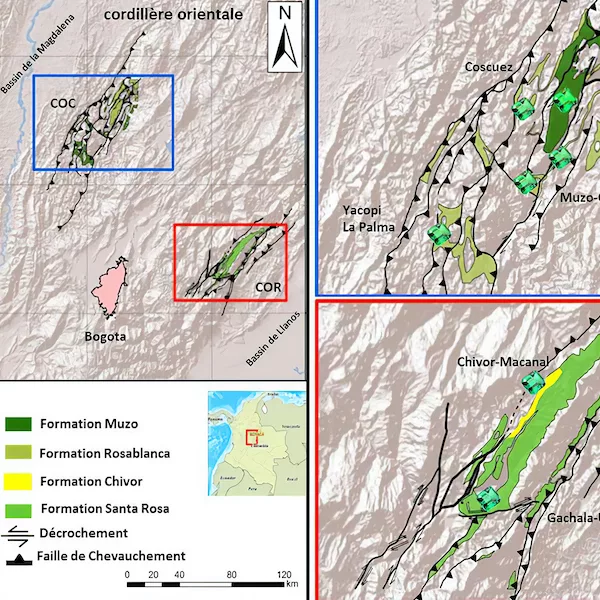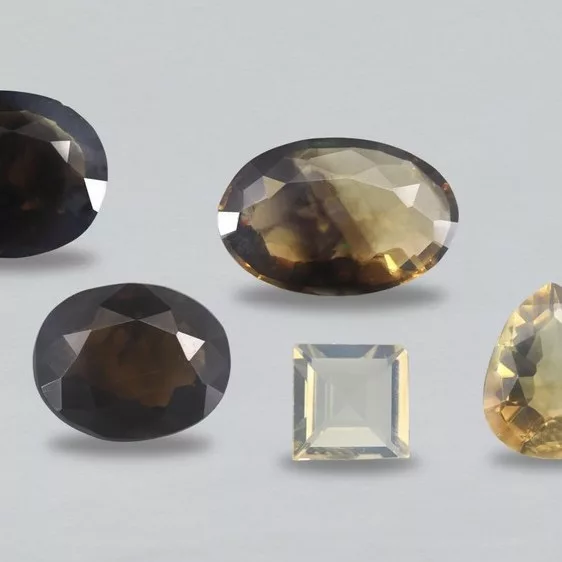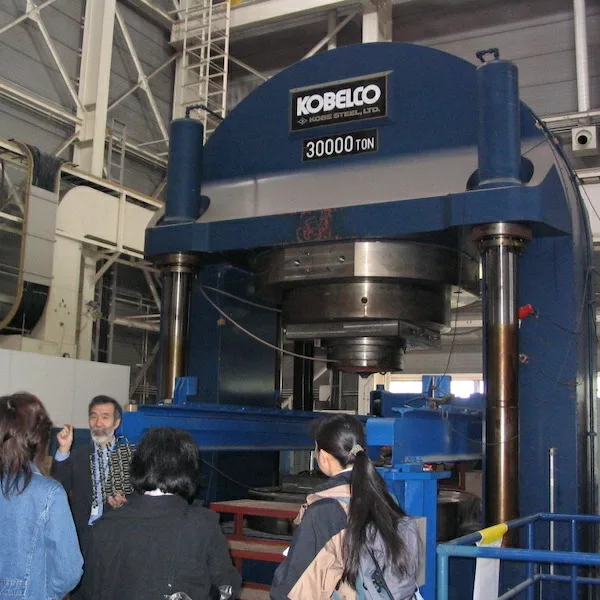Study and investigation of garnet from Balangir in Odisha, India
Keywords: almandine-pyrope garnet, inclusions, spectroscopic analyses, Balangir, Odisha
Introduction
In the present study investigation of almandine-pyrope garnet, found in the Khaliapali village (20.8639° N, 83.4708° E) located in Balangir Tehsil of Balangir district of Odisha state, was carried out. In Khaliapali the area constitutes a part of the Precambrian khondalite-charnockite-granite gneiss in which broken garnet crystals are found. Gemmological properties, values for refractive indices, specific gravity, as well as UV-VIS and FTIR data have been determined. Semi-quantitative analyses carried out using EDXRF show presence of titanium and chromium. Inclusions studies along with Raman spectroscopy identified mineral inclusions as rutile, sillimanite, ilmenite, apatite and zircon.
Materials and methods
From numerous garnet cabochon pieces polished from the broken garnet crystals, ten garnet specimen with prominent inclusions were selected. Using gemmological methods their optical properties, refractive index, specific gravity, UV fluorescence etc. were determined. In depth study of the internal features was done using gemmological microscopes. Laser Raman Spectroscopy was used to determine the identity of the microscopic inclusions crystallizing near the surface. Non-polarized UV-VIS spectra for all samples were collected using JASCO F660 spectrophotometer over the 350nm – 700nm range. Mid Infrared spectra of 4 samples were collected in transmission mode by JASCO FT/ IR-6600 with a resolution of 4cm-1. Semi-quantitative analyses were carried out using EDXRF and electron microprobe.
Results
Visual Appearance:
The garnet cabochons from Khaliapali village of Balangir District of Odisha were found to be transparent and have a combination of purplish red to maroon red color. Balangir garnet appear to be a member of the pyrope-almandine solid solution series, their coloration is due to high Fe content and show presence of various inclusions.
Gemmological Properties:
Specific Gravity was found to be in the range of 3.84 to 3.87, determined by spot method refractive indices fell in the range of 1.77 but most of the specimen had refractive indices above the range of the refractometer. All samples showed no fluorescence under LWUV as well as under SWUV.
Microscopic Observations:
Surface reaching inclusions were identified using laser Raman spectroscopy. Balangir garnet has small elongated crystals of apatite (Figure 1). Black colored crystals of ilmenite and rutile (Figure 2) were observed in many of the specimen. Rutile needles (Figure 3) were found to be prominent in most of the samples and appear to be oriented. In many samples there were crystals of zircon surrounded by haloes (Figure 4). Among the other commonly found inclusions was those of quartz crystals (Figure 5). Fibrous crystals of sillimanite (Figure 6) were seen in four of the specimens.
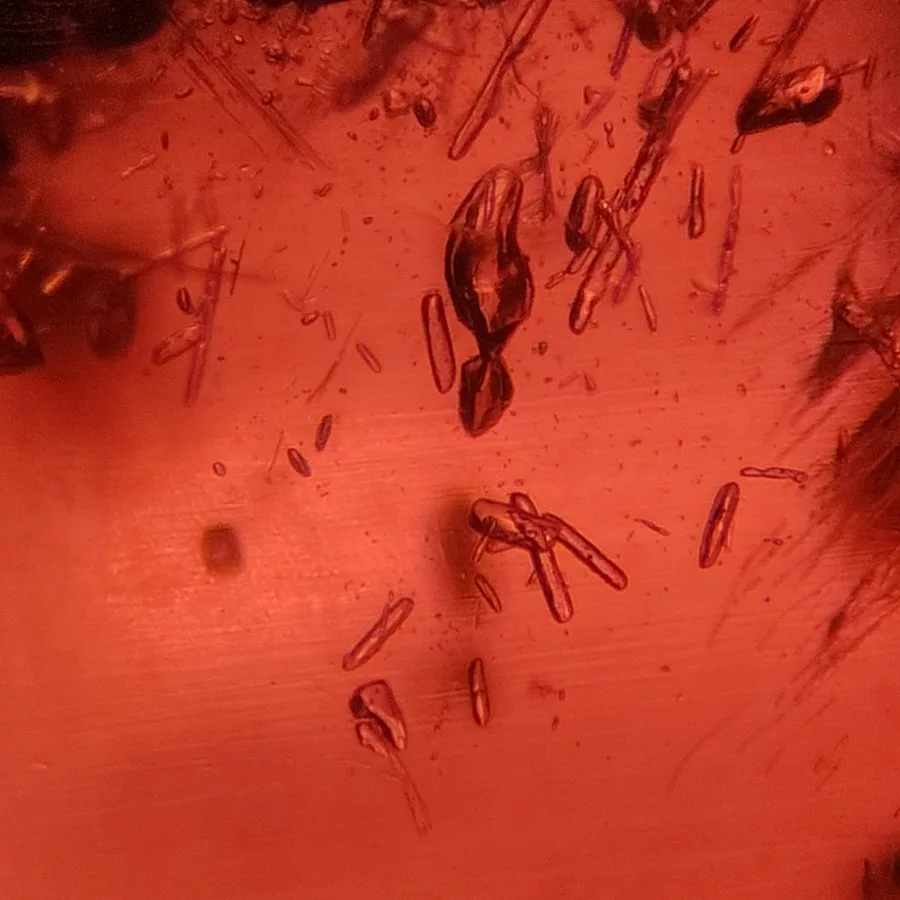
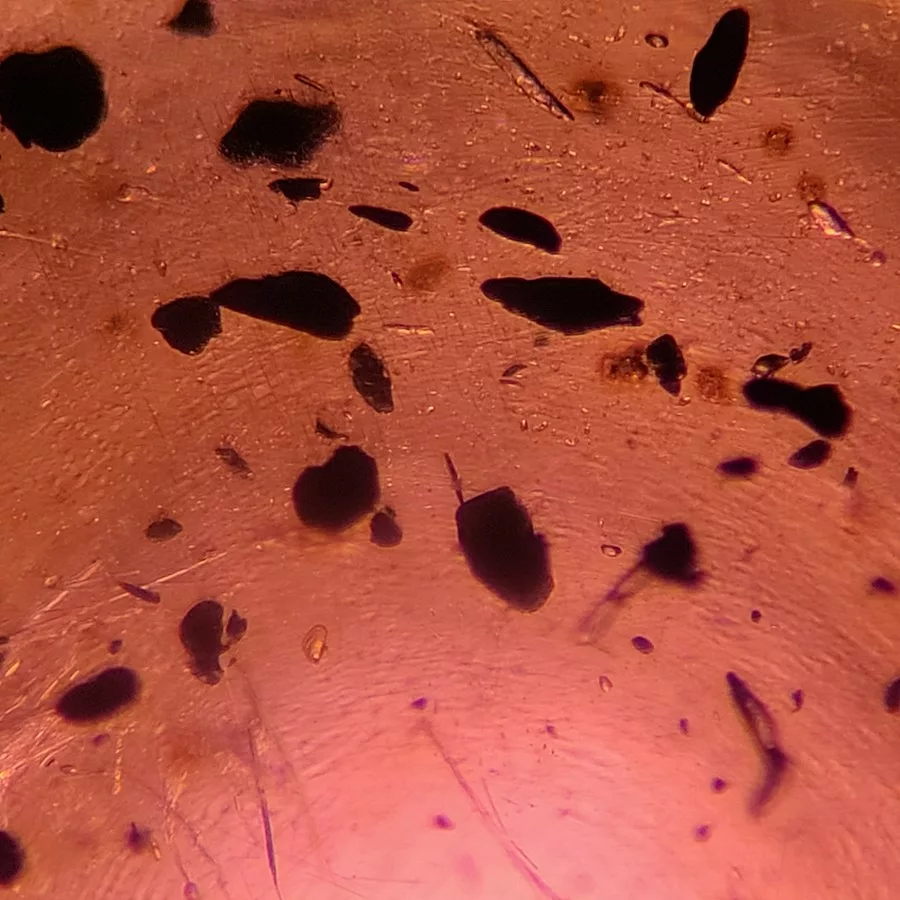
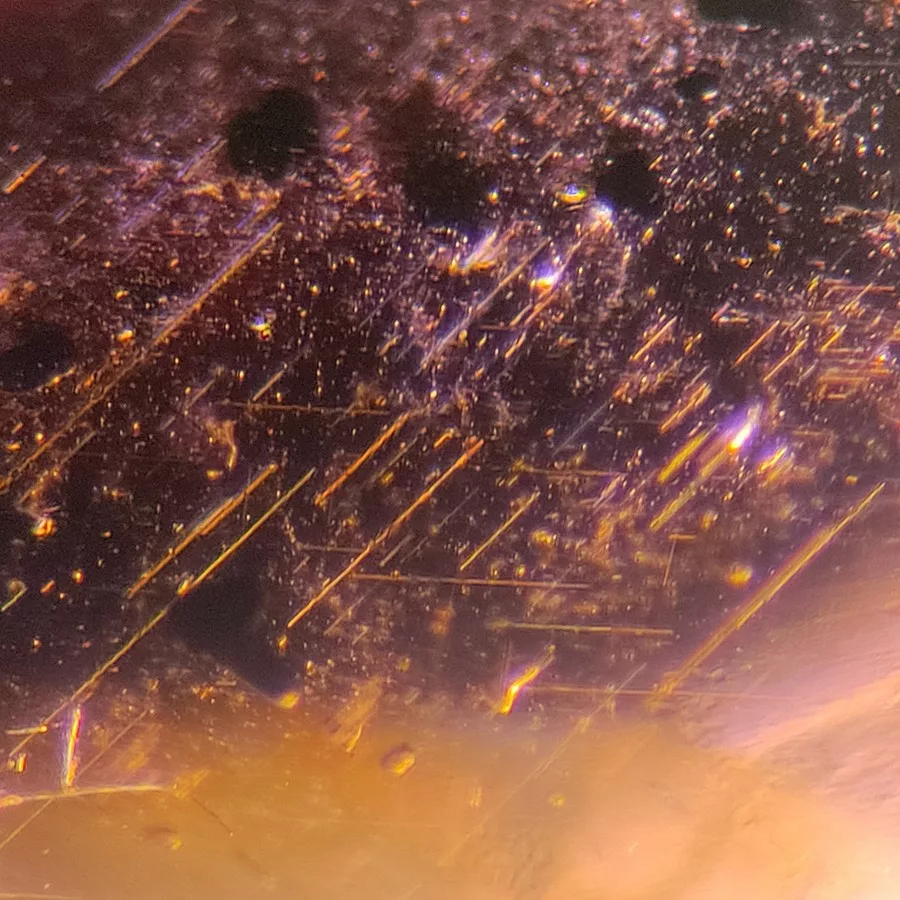
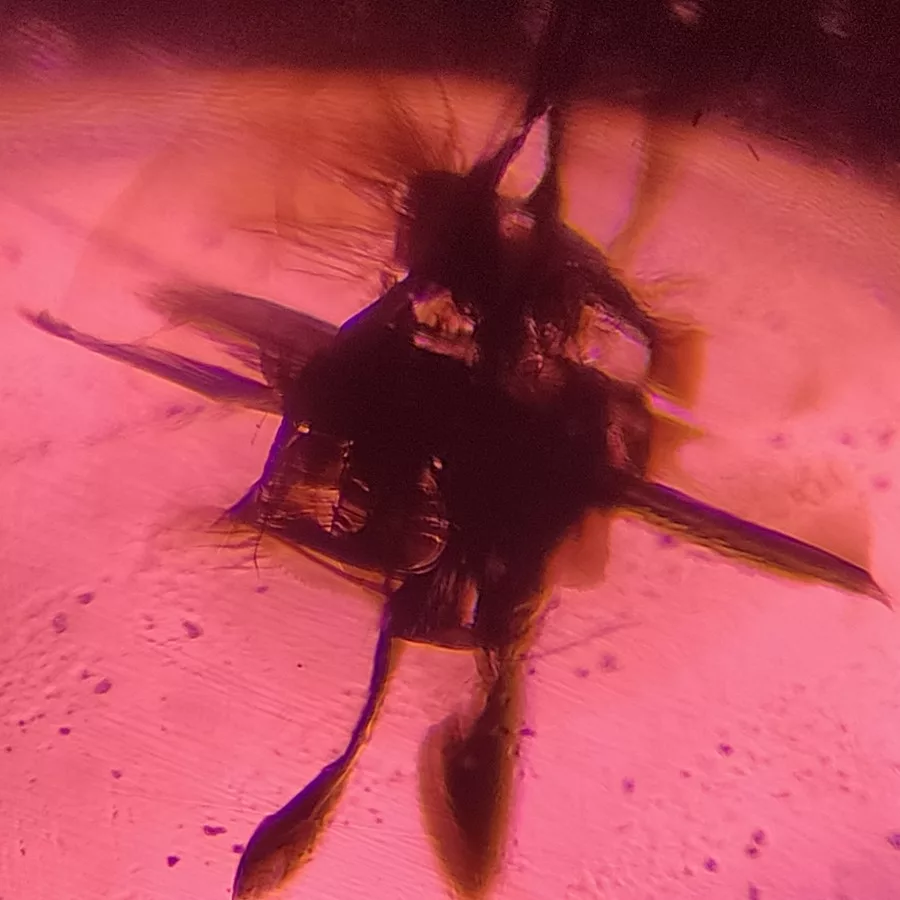
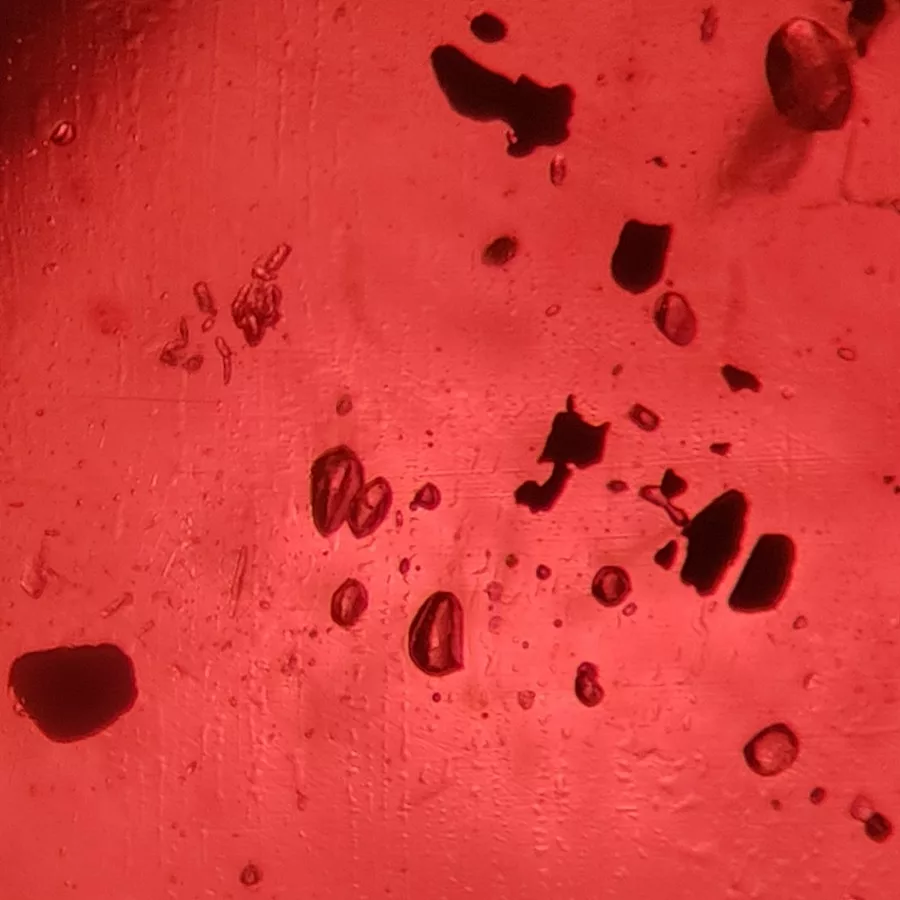
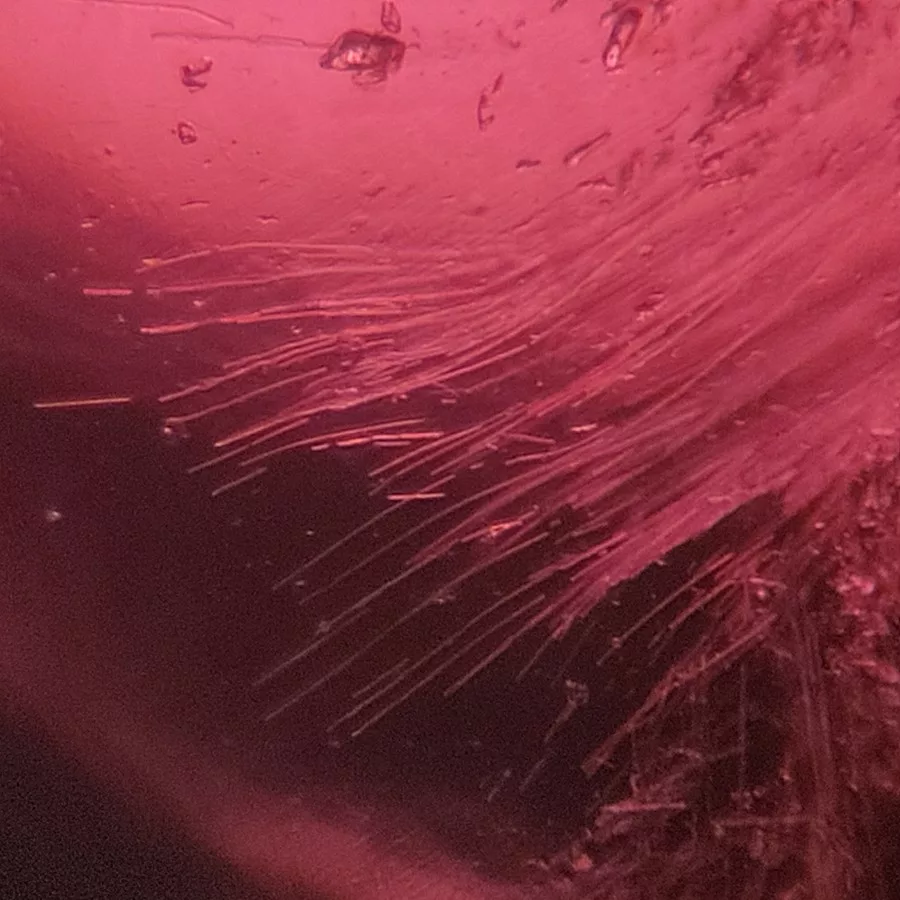
UV-Vis Spectra:
The UV-Vis spectroscopy of Balangir, Odisha garnet revealed the typical almandine pyrope absorption peaks at 505nm, 526nm and 576nm (Figure 7) in the yellow-green region are due to Fe3+. In addition, absorption at 369 nm in the purple region, with strong transmission near 655 nm in the red region and a hump near 690nm was observed and this may be the reason why these garnets have a reddish colour. According to Li (2022), this may be attributed to Cr3+. In addition to these absorptions and transmissions, the maroon purplish-red garnets also formed narrower but distinct absorptions at 462nm, 427nm, and 401nm in the blue-violet region, particularly in the violet region, FTIR Spectra: The FTIR spectra in the mid infrared region between 400 and 1200cm-1 region for the Balangir garnet showed certain distinct features (Figure 8). According to Sibi & Subodh (2017), who have studied almandine pyrope garnet from Tamil Nadu, the cations in the octahedral site (Al3+, Fe3+ etc.) result in the bands between 400 and 500 cm-1 appear to be similar to those seen in the Balangir almandine garnet. The peaks around 800–1200 cm-1 can be assigned to Si–O asymmetric stretching vibrations. These bands are independent of multiple cations that might be present in the dodecahedral site. Another group of bands around 500– 650 cm-1 could be due to Si–O asymmetric bending vibrations. The presence of band 626cm-1 indicates the garnet to be a combination of almandine-pyrope and this feature has been used to distinguish pyrope from other garnets, in pure pyrope this peak is absent. The FTIR spectrum of with transmissions near 445 and 385 nm. The purple of the purplish-red garnet is caused by such variation in selective absorption. The colour of a mineral is the result of its selective absorption of visible light, which is often caused by the transitional metal elements contained in the mineral. In this case the additional three absorption lines seen in the spectrum of the purplish red sample at 462nm, 427nm, and 401 nm are due to Mn2+, Fe3+, and Fe2+, respectively. (Stockton &, Manson 1985). Whereas Li (2022) attributes these absorption peaks to Mn2+ only. The variation in colour shades may be due to the presence of Mn2+ in the chemical composition.
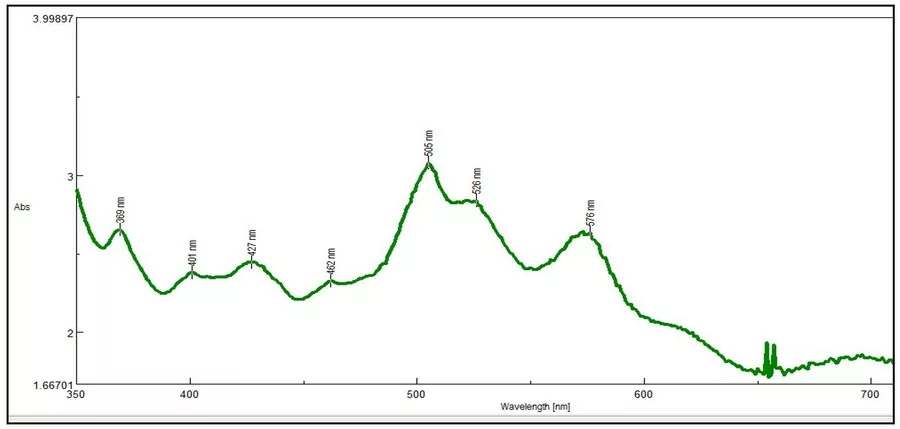
FTIR Spectra:
The FTIR spectra in the mid infrared region between 400 and 1200cm-1 region for the Balangir garnet showed certain distinct features (Figure 8). According to Sibi & Subodh (2017), who have studied almandine pyrope garnet from Tamil Nadu, the cations in the octahedral site (Al3+, Fe3+ etc.) result in the bands between 400 and 500 cm-1 appear to be similar to those seen in the Balangir almandine garnet. The peaks around 800–1200 cm-1 can be assigned to Si–O asymmetric stretching vibrations. These bands are independent of multiple cations that might be present in the dodecahedral site. Another group of bands around 500– 650 cm-1 could be due to Si–O asymmetric bending vibrations. The presence of band 626cm-1 indicates the garnet to be a combination of almandine-pyrope and this feature has been used to distinguish pyrope from other garnets, in pure pyrope this peak is absent. The FTIR spectrum of with transmissions near 445 and 385 nm. The purple of the purplish-red garnet is caused by such variation in selective absorption. The colour of a mineral is the result of its selective absorption of visible light, which is often caused by the transitional metal elements contained in the mineral. In this case the additional three absorption lines seen in the spectrum of the purplish red sample at 462nm, 427nm, and 401 nm are due to Mn2+, Fe3+, and Fe2+, respectively. (Stockton &, Manson 1985). Whereas Li (2022) attributes these absorption peaks to Mn2+ only. The variation in colour shades may be due to the presence of Mn2+ in the chemical composition. the Balangir garnet contains this peak (626cm-1) and is due to the presence of almandine in the garnet solid solution. Moreover, it is a single peak for pure almandine whereas the splitting of peak in the 600–650 cm-1 in the present IR spectrum indicates the multiple occupancy of cations in the dodecahedral site, and its intensity depends on the pyrope percentage as elaborated by Sibi & Subodh (2017).
Chemical Analyses:
Semi-quantitative chemical analyses by EDXRF for Balangir garnet gave the oxide weight % for SiO2 =37.56 to 38.79, Al2 O3 =21.46–22.75, for FeO=36.92–39.03 for MgO= 2.96– 3.27 and for MnO = 1.10-1.30, whereas the oxide weight % for Cr2 O3 and TiO2 was determined as 0.07 and 0.06 respectively
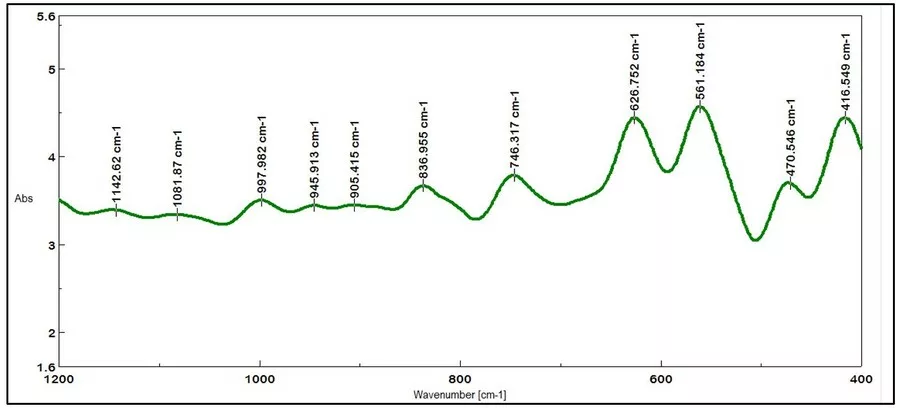
Discussion:
Balangir garnet found in the khondalite-charnockite-granite gneiss show a variety of inclusions, which are very similar to the inclusions observed by Schmetzer et al 2017and Gilg et al 2017, in the garnets from Garibpet and Arikamedu. Axler & Ague (2015) have shown that presence of oriented acicular inclusions indicate that the garnets were crystallised under ultrahigh temperature and pressure. Presence of oriented inclusions like rutile, ilmenite, sillimanite etc reveal the temperature to be above 1000°C and a pressure above 3GPa (Axler & Ague 2015). The variation in colour shades may be due to the presence of Mn2+ in the chemical composition Li (2022).
Conclusion:
The Balangir almandine-pyrope garnet has inclusions similar to those studied by Schmetzer et al. (2017), indicating that the emplacements of these garnets may have been in a similar type of metamorphic rock mentioned in that study. The geology of the Indian subcontinent is extremely complicated with numerous metamorphic events, so it is indeed difficult to indicate whether the geological period was also similar to that in the study done by Schmetzer et al. (2017), it could be similar. There are oriented acicular needles of rutile and ilmenite in some of the specimens. Oriented acicular inclusions of the Balangir garnet could be the result of crystallization at ultrahigh temperature of above 1000°C and pressure above 3GPa as stated in Axler & Ague (2015).
References:
- Axler J.A. and Ague J.J., 2015: Oriented multiphase needles in garnet from ultrahigh-temperature granulites, Connecticut, U.S.A. American Mineralogist, Volume 100, pages 2254–2271, 2015
- Gilg H.A., Schmetzer K, And Schüssler U., 2017: An early Byzantine engraved almandine from the Garibpet deposit, Telangana state, India: Evidence for garnet trade along the ancient maritime silk road. Gems &Gemology, Vol.54, No.2, pp. 149–165
- Li M., 2022: Spectroscopic Study on the Species and Color Differences of Gem-Quality Red Garnets from Malawi. Journal of Spectroscopy Volume 2022, pp1-9
- Schmetzer K., Gilg H.A., Schüssler U., Panjikar J., Calligaro T., Périn P., 2017: The linkage between garnets found in India at the Arikamedu archaeological site and their source at the Garibpet deposit. Journal of Gemmology, Vol. 35, No. 7, pp. 598–627
- Sibi N. & Subodh G., 2017: Structural and Microstructural Correlations of Physical Properties in Natural Almandine-Pyrope Solid Solution: Al70Py29. Journal of Electronic Materials, Vol. 46, No. 12 pp 6947-6956.
- Stockton C.M., Manson D.V., 1985: A proposed new classification for gem-quality garnets. c, Vol. 21, No. 4, pp. 205-218
Acknowledgements:
Authors thank Dr. Mrs. N. Das for her help to procure the samples. Authors express gratitude to the technical staff of National Chemical Laboratory, Dept. of Geology, University of Pune and Pangemtech for carrying out the analyses.

